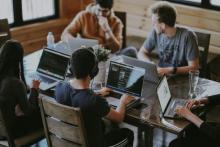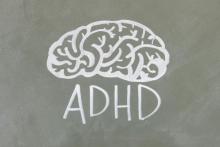The “bystander effect” occurs when the presence of others discourages an individual from intervening in an emergency situation, against a bully, or during an assault/crime. Generally, the greater the number of bystanders, the less likely it is for any one of them to provide help to the person in distress. People are actually more likely to take action when few or no other witnesses are present.
However, we all play a role in creating a safe public space and
supporting each other when harassed or in threatening situations. Many
different things count as harassment, including: intimidating looks/staring,
comments about appearance, vulgar gestures, following someone, saying racist, xenophobic,
homophobic, sexist, and transphobic slurs.
It is important to remember that people experience public space differently.
How safe and/or comfortable we feel depends in large part on our identities –
who we are, how others see us, and if we have experienced harassment before.
Your privilege and your vulnerability can change depending on the situation and
space. You may feel a certain part of your identity – race and ethnicity, gender
identity, class, language, ability, religion, etc - is threatened in some spaces and celebrated
in others. In some spaces, your privilege gives you more power than others.
Even if in a position of privilege, some of the most common reasons for not coming to the aid of a victim and taking action include:
- Fear that the personal risk of harm is too great
- Feeling that one doesn’t have the strength or other traits needed in order to be able to help or fear you’ll make it worse
- Assuming you can’t make a difference
- Detaching yourself from the problem or assuming “it’s a cultural or familial thing”(This is the most common reason people don’t intervene when they witness spousal or child abuse.)
- Inaction from others thwarts your own momentum and makes you question the severity
Bystander intervention is powerfully important and can sometimes be as simple as remembering the 5D’s.
DISTRACT
If
possible, take an indirect approach to de-escalate the situation. This could
take the form of starting a conversation with the person or finding another way
to draw attention from them. Some examples are: asking them for directions or
time, dropping something, or speaking loudly around them.
DELEGATE
Find
someone in a position of authority (a bus driver, train operator, flight
attendant, teacher) and ask them for help. If such a person is not nearby, ask another
bystander for help in the situation. You can also ask the person being harassed
if they are okay and if they want you to call for help.
DELAY
If
you aren’t able to help intervene in the moment, you can check in with the
person afterwards to see if they are okay and if there is anything you can do
to support them helping to illustrate that they aren’t alone. This is
especially important if they seem very rattled by the situation. An example of
language to use would be: “How are you doing now – is everything okay?” “Can I
help you get to where you need to go? Or can I call someone for you?”
DIRECT
Take
the direct approach and speak out against the harassment. Be firm and clear
when stating that the behavior is inappropriate and to leave the person alone. Many
people feel they need to assess their own safety first before taking the direct
approach.
DOCUMENT
Especially as we have seen recently, it is important and helpful to document and have a video of the incident. It can help the target but always ask the person what they want done with the footage and never post it online without their permission. If possible, film people and notable landmarks that can help identify the location and harassers.
Together, we can end hate and harassment by all playing a role to make not only work but public spaces safe for all. Part of creating a safe environment is speaking up when you experience or witness intolerance, mistreatment, or bias in action. Microagressions and discrimination need to be called out and not observed silently. We hope you will also take some time to watch this video from an OITE event: Moving from bystander to updstander: take action to combat harassment and aggression.




